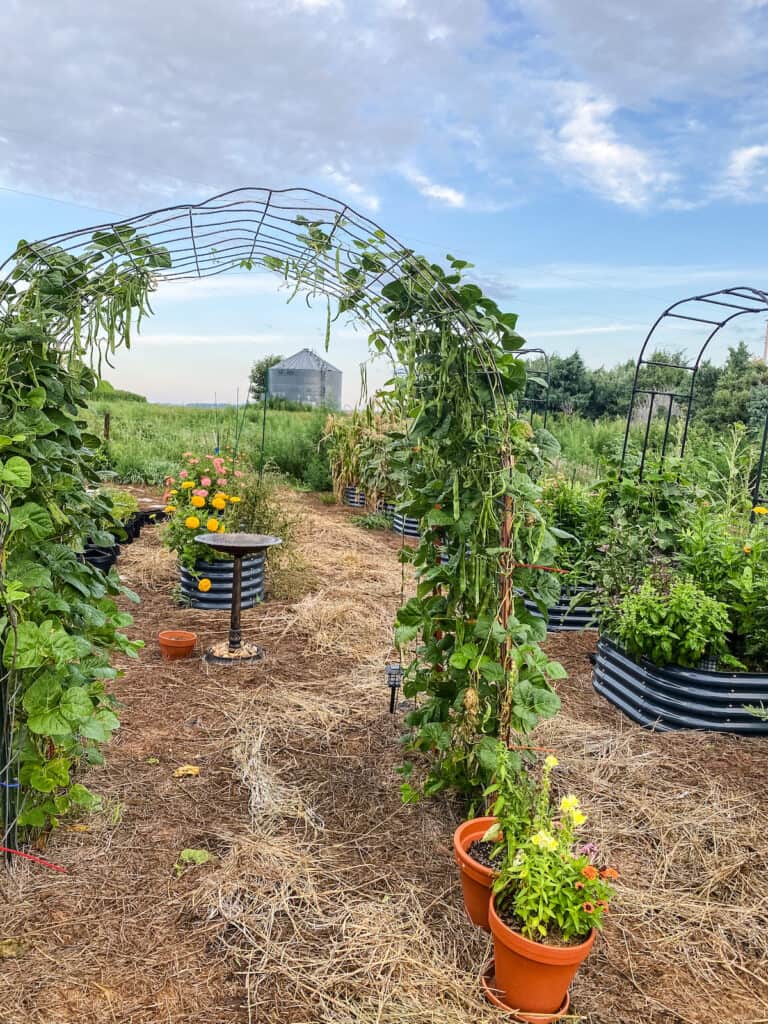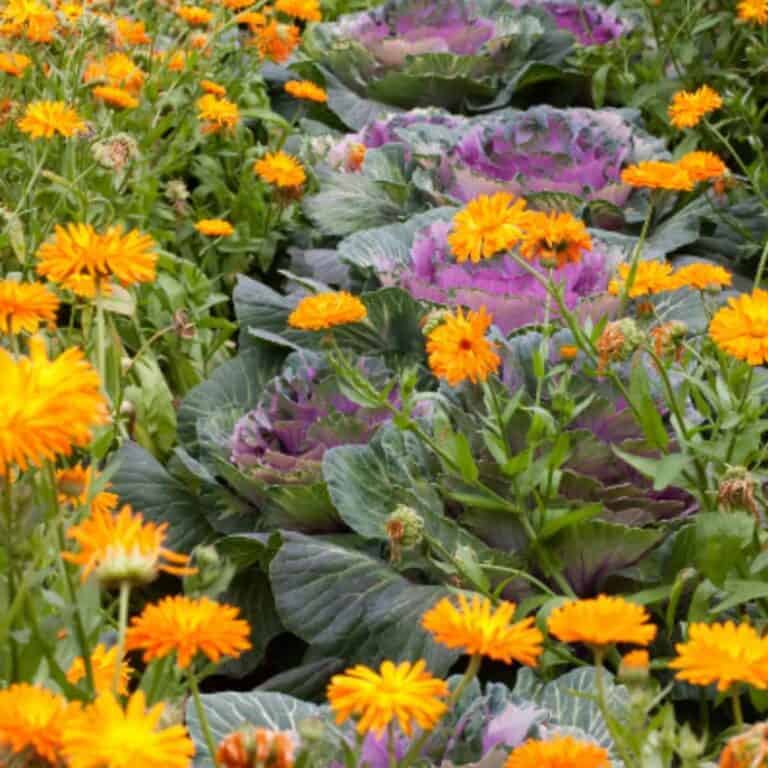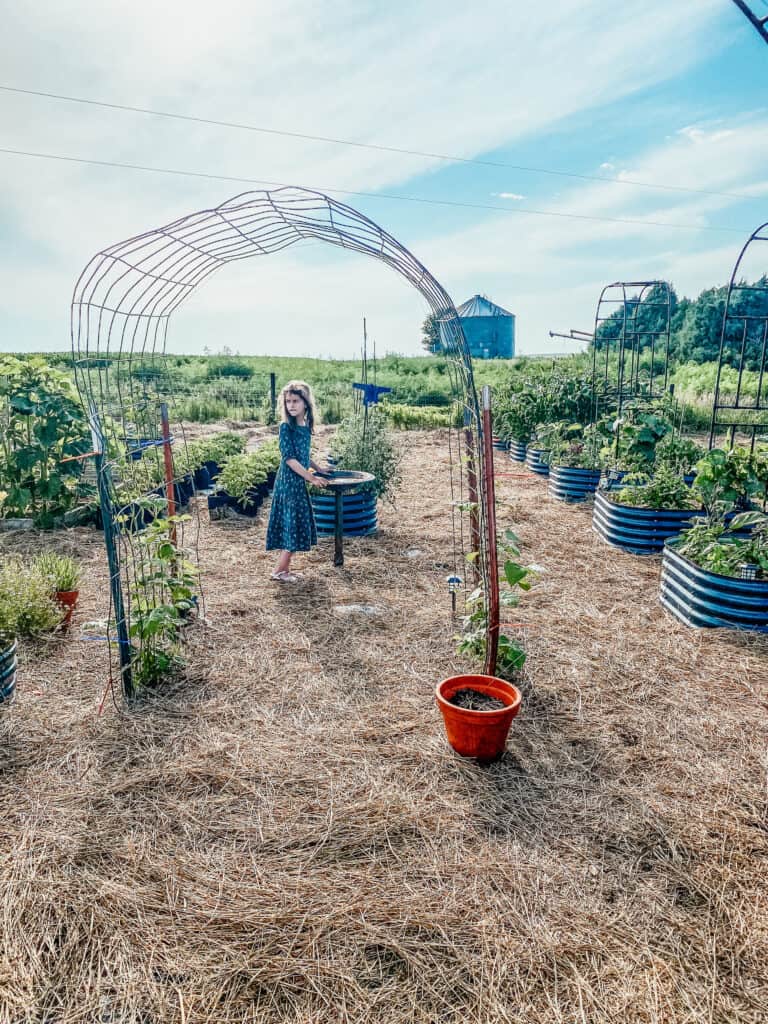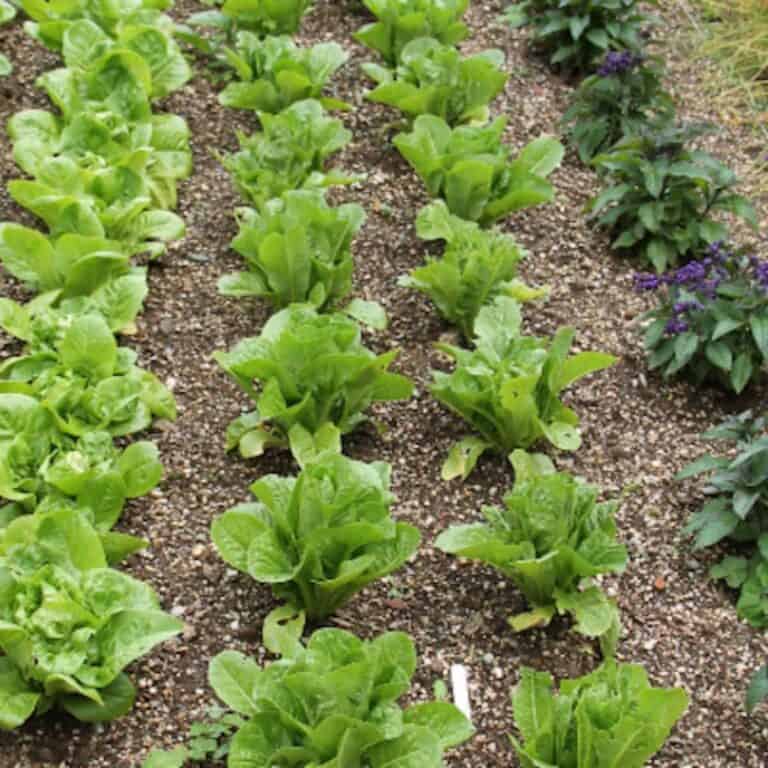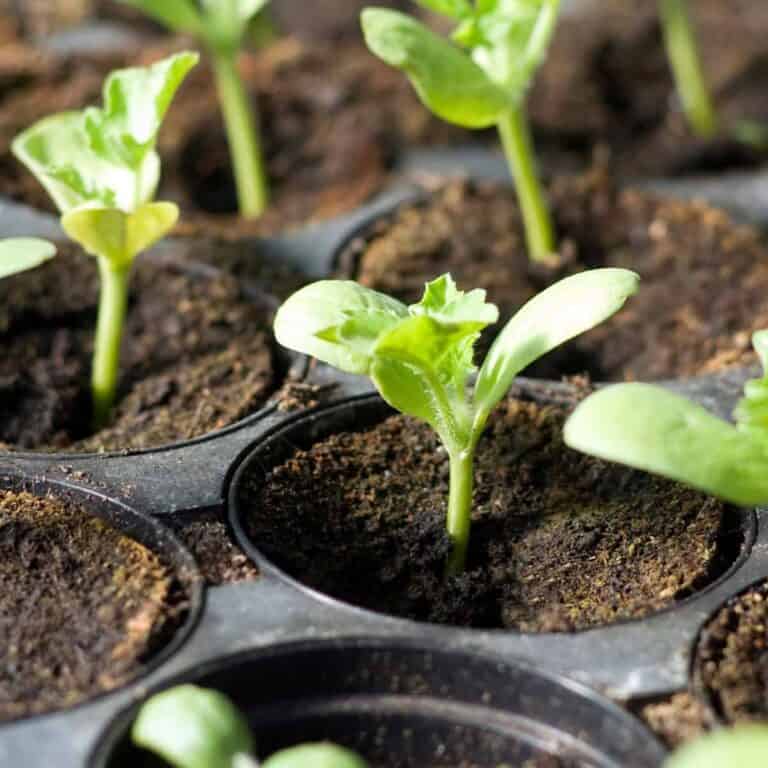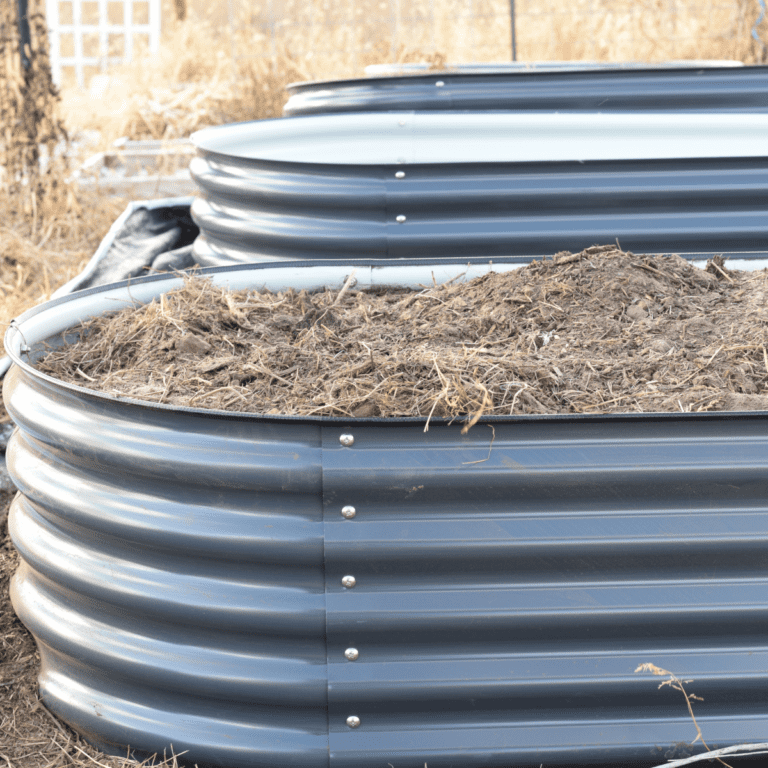Tomato Support & Trellising Methods—Which is Best?
Supporting and trellising your tomatoes is essential—especially for indeterminate varieties, which can grow quite tall and heavy.
Even determinate (bush) tomatoes benefit from some support to keep fruit off the ground and reduce disease. Here’s a breakdown of the most popular support methods, including pros and cons for each:
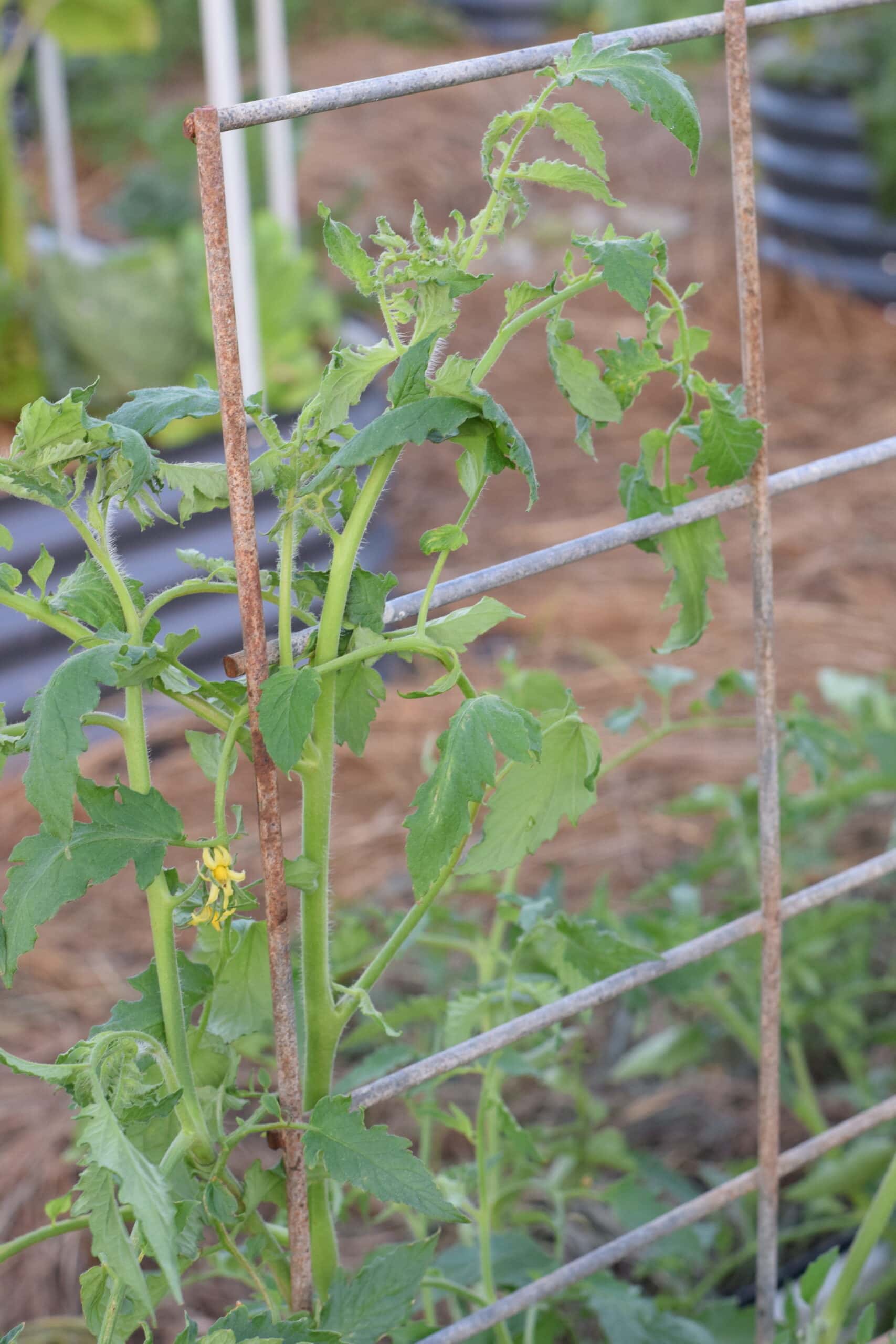
Personally, I rarely prune our tomato plants. Generally, the summer is our busiest season on the ranch. But I’ve found that using a trellis is incredibly helpful in keeping our tomato jungle a little less chaotic and so I rely on cattle panel trellises for our tomatoes.
In this post, I want to break down some of the most common and popular tomato supports & methods to help you make the best decision for your garden.
So, let’s dive in…
Tomato Support & Trellising Methods
Tomato Cages
Best for: Determinate or small indeterminate varieties.
How it works: Wire cages are placed over young plants and support growth from all sides.
✨Tip: Look for heavy-duty or homemade cages using concrete reinforcement wire (CRW) for sturdier support.
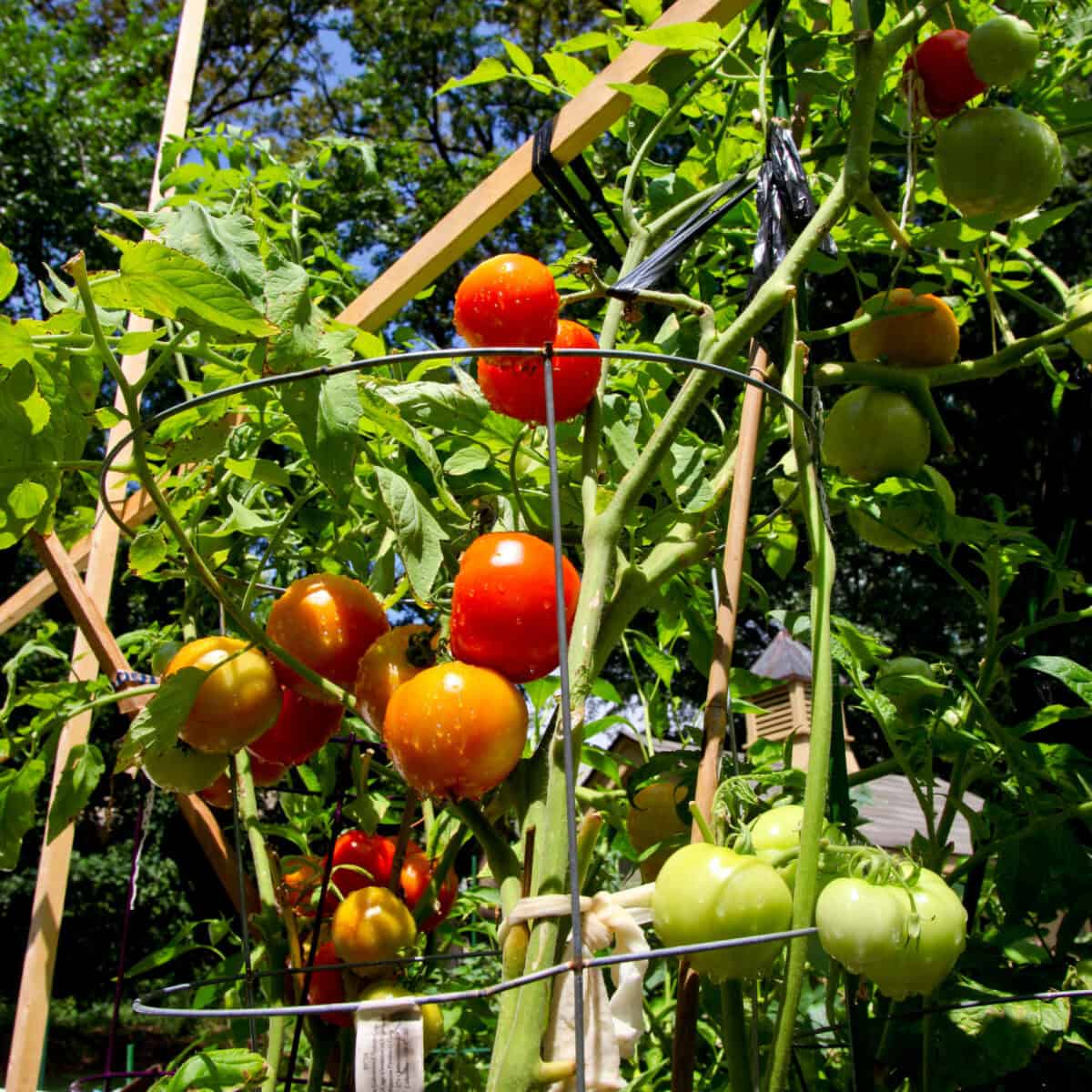
Single-Stake Method
Best for: Both determinate and indeterminate tomatoes
How it works: A sturdy wooden, metal, or bamboo stake (6–8 ft tall) is driven into the soil next to the plant. As the tomato grows, the main stem is tied to the stake with garden twine or clips.
✨Tip: Use soft ties or stretchy garden tape to avoid damaging stems.
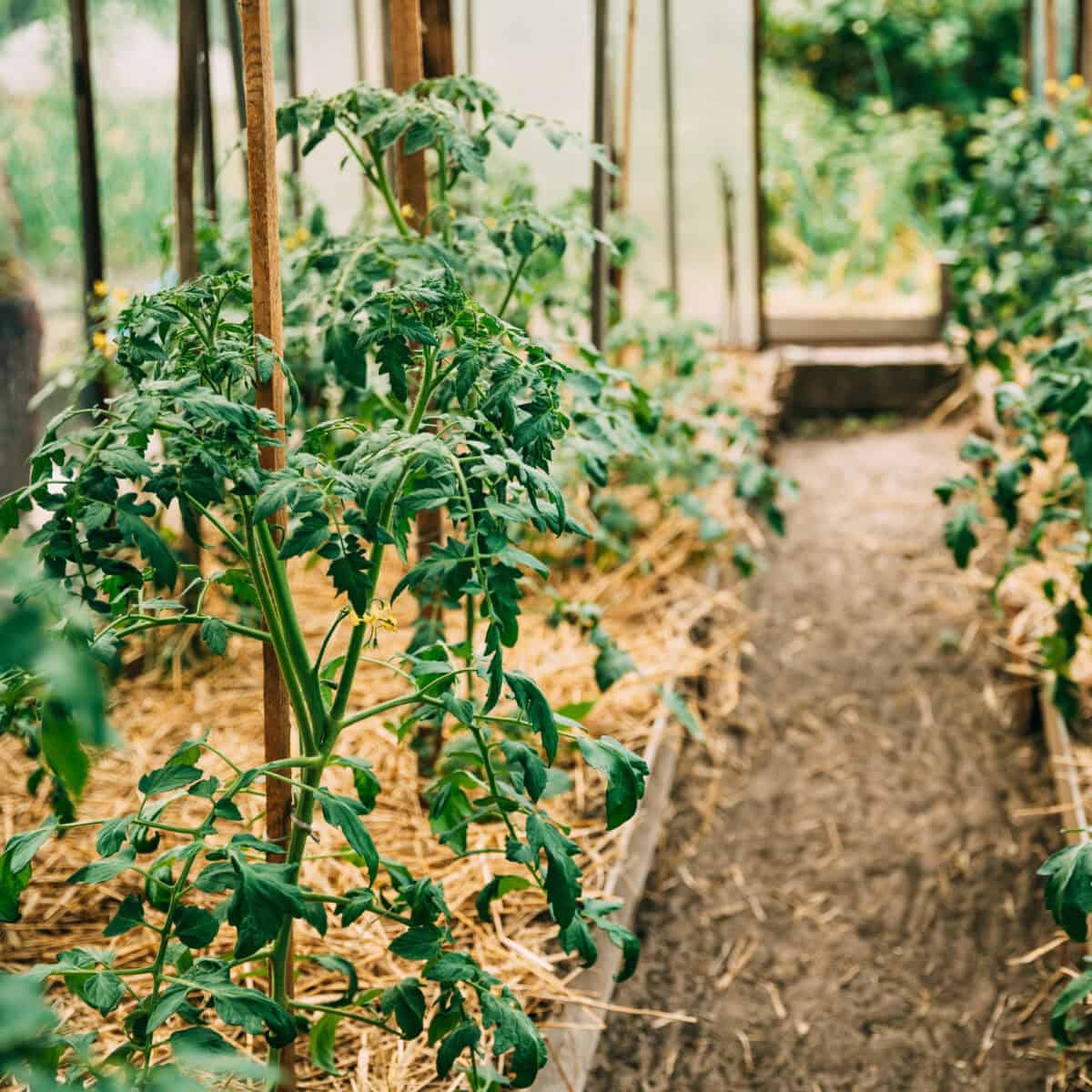
Florida Weave (Basket Weave)
Best for: Rows of determinate or semi-determinate tomatoes
How it works: Stakes are placed every 2–3 plants. Twine is woven between the stakes to hold plants upright in a woven pattern as they grow.
✨Tip: Start weaving when plants are 12–18″ tall, and add new layers of twine every 6–8″.
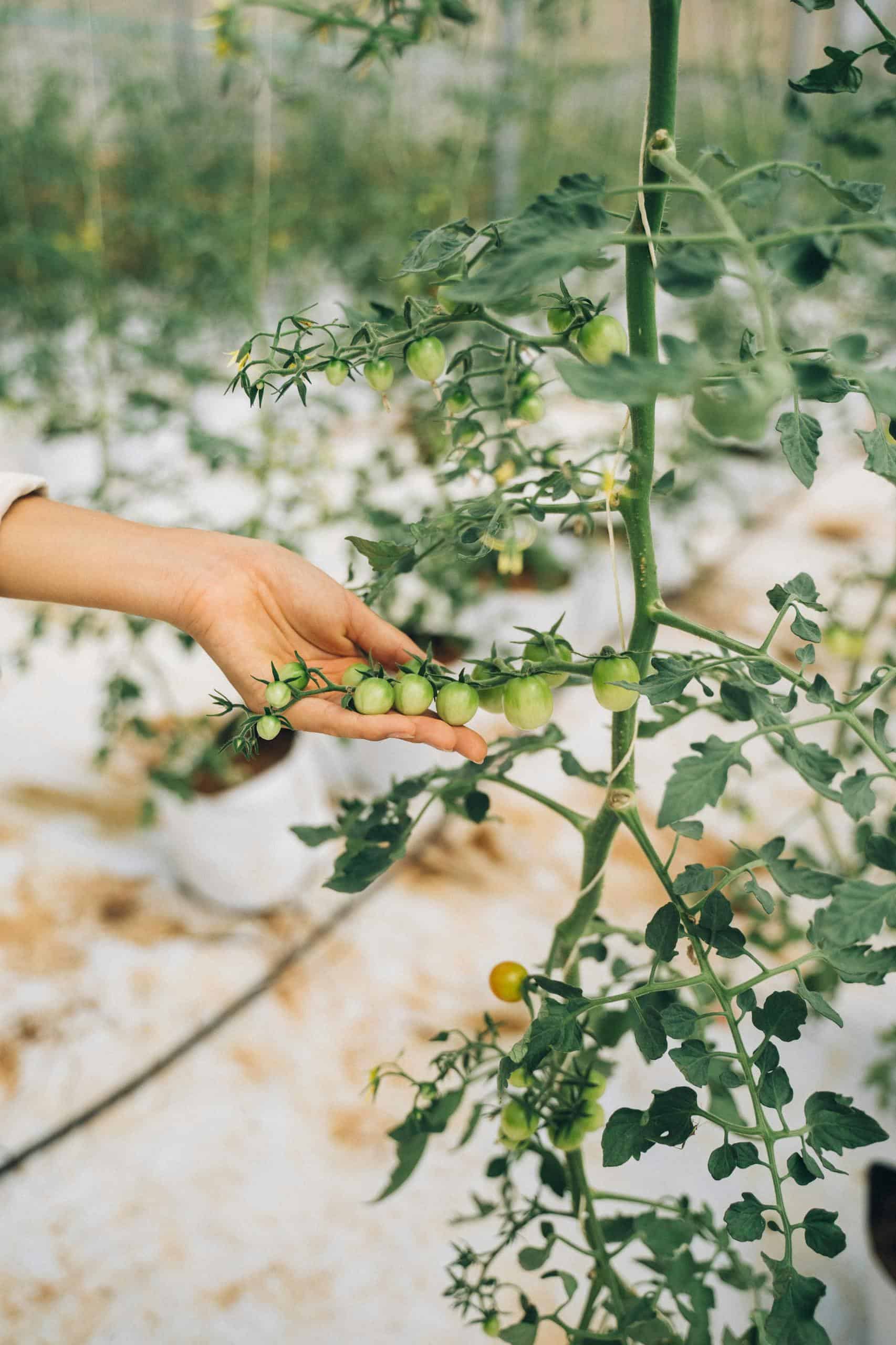
Trellis System (Vertical or A-Frame)
Best for: Indeterminate tomatoes.
How it works: A tall structure (wood or metal) supports plants that are tied and trained upward using twine or clips. You can use vertical lines from a horizontal top bar or an A-frame with netting.
✨Popular system: String trellis: run strong twine from an overhead bar or frame, then train tomatoes upward with clips or twists.

Tomato Ladders / Spiral Stakes
Best for: Compact or container-grown tomatoes.
How it works: Metal spiral or ladder-like structures that tomatoes can be trained to grow up.
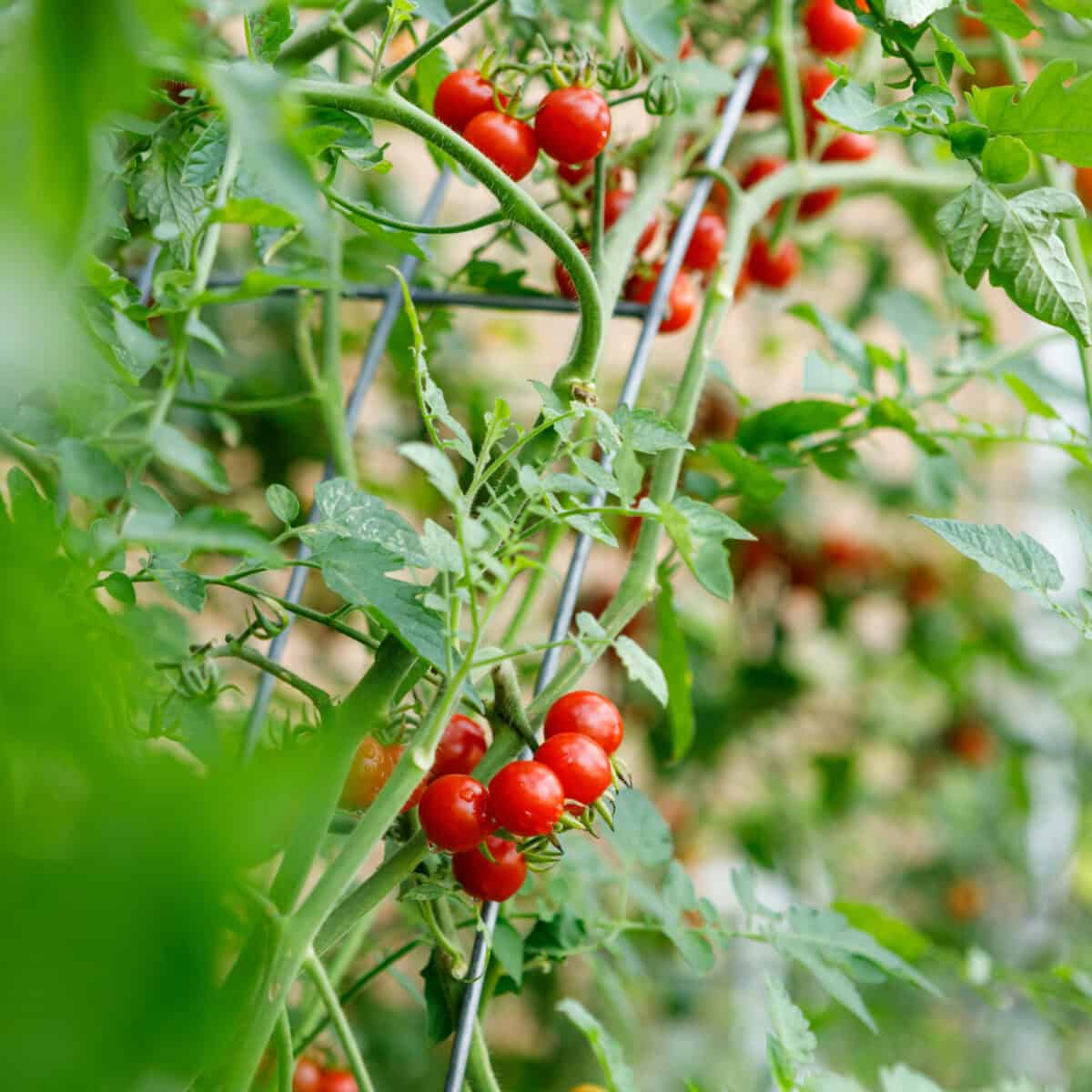
Overhead Trellis with Drop Lines (Greenhouse Style)
Best for: High-density or greenhouse growing of indeterminate types.
How it works: A horizontal beam spans over the tomato row with strings dropped down to each plant. Plants are clipped and trained to the lines.
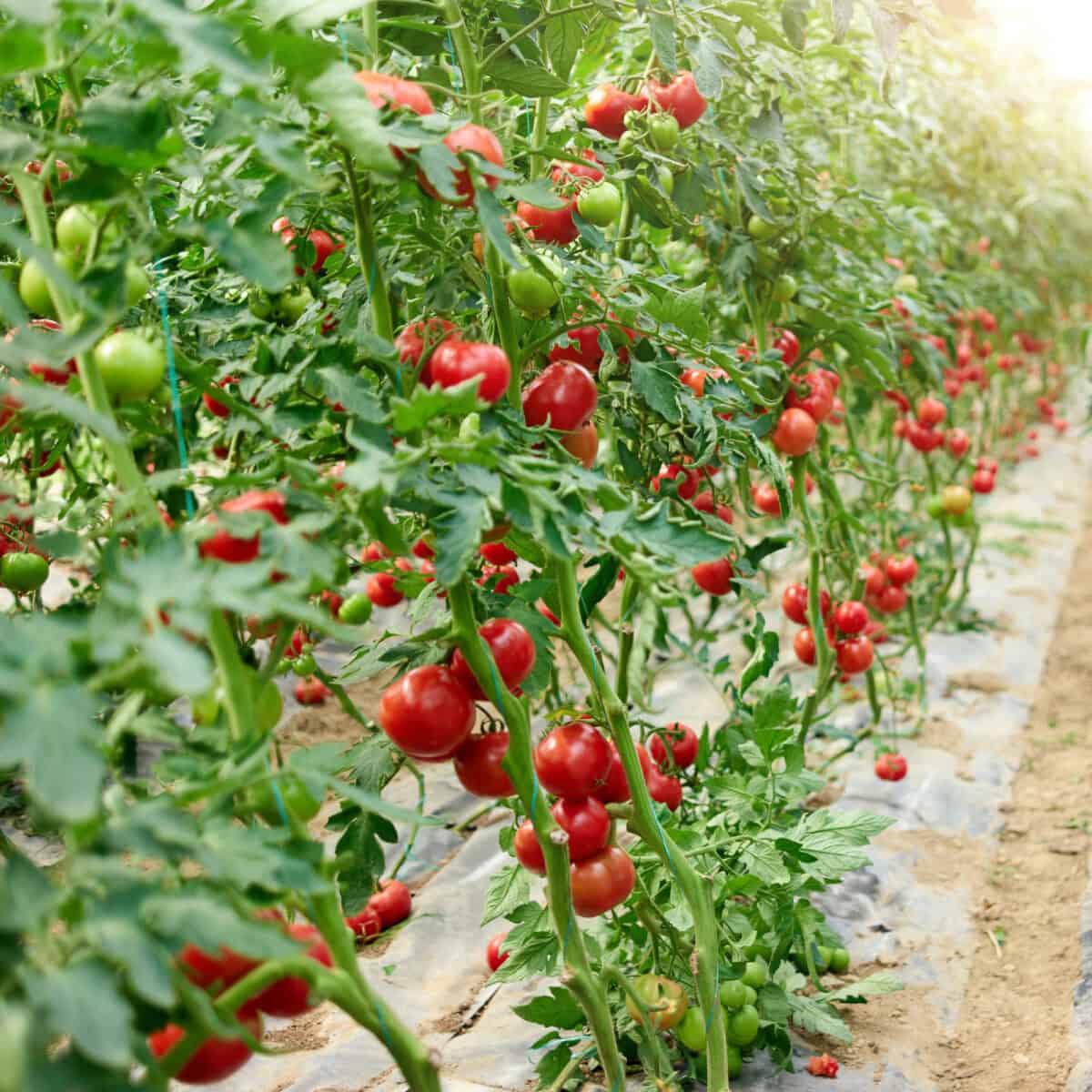
What is the best support method?
01
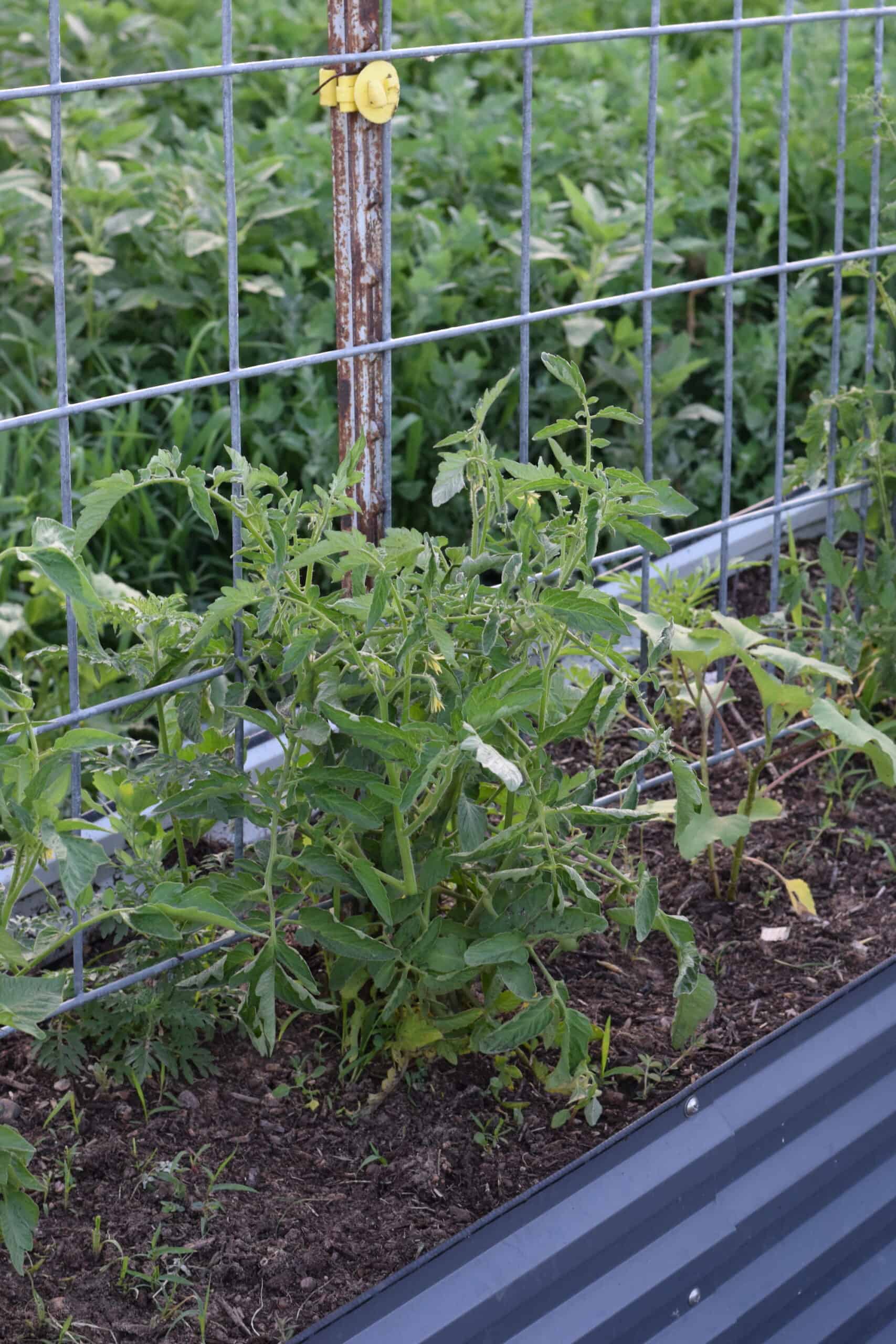
Determinate tomatoes
Cages, Florida weave, small stakes
02

Indeterminate tomatoes
Staking, vertical trellis, string trellis
03

Container tomatoes
Spiral stakes, mini cages, ladders
Want to save this?
✂️ Pros & Cons of Pruning Tomatoes
Now let’s chat a bit about the pros/cons of pruning tomatoes. Do you even need to prune your tomatoes? The short answer is — it depends.
As I’ve mentioned above, I don’t always prune ours. But when I do, we use cattle panels as our trellis method (see pictures above.
So when determining which is best for you, there are some things to consider before you make this decision.
What the pros of pruning?
1. Improved Airflow and Disease Prevention
- Removing excess foliage improves air circulation, reducing the risk of fungal diseases like blight and powdery mildew.
- Keeps leaves off the soil, where pathogens live.
2. Better Light Penetration
- More sunlight reaches the interior of the plant and ripening fruit.
- Helps lower fruit ripen faster and more evenly.
3. Larger, Healthier Fruit
- Pruning redirects the plant’s energy from growing excessive leaves to producing bigger, better fruit.
4. More Manageable Plants
- Prevents indeterminate tomatoes from becoming a tangled, sprawling mess.
- Makes it easier to trellis, stake, harvest, and monitor for pests.
5. Encourages Early Ripening
- Fewer branches mean fewer flowers and fruit—so the plant can mature its fruit faster. Helpful in shorter growing seasons.
6. Supports Vertical Growing
- Especially important in tight spaces or raised beds where vertical growth is essential.
And what about the cons of pruning?
1. Reduced Total Yield (Sometimes)
- Pruning reduces the number of flowers, which can lead to fewer overall tomatoes—especially with determinate varieties.
- If you’re aiming for quantity over size, less pruning may be better.
2. Labor Intensive
- Requires regular attention throughout the season—checking for suckers every few days.
- Takes time and consistency to do correctly.
3. Potential for Sunscald
- Removing too many leaves too quickly can expose fruit to intense sun, causing sunscald (pale or blistered patches).
4. Not Ideal for Determinate Varieties
- Determinate tomatoes grow to a set size and produce all their fruit in a short window.
- Pruning can reduce your harvest since these varieties don’t keep producing new fruit.
5. Stress on the Plant (if overdone)
- Aggressive or late-season pruning can stress the plant, especially during heat or drought.
- Always use clean, sharp tools to avoid damaging the plant or introducing disease.
What are tomato pruning best practices?
- Focus pruning on indeterminate tomatoes for best results.
- Remove suckers (the small shoots that grow between the main stem and a leaf branch) early while they’re small.
- Avoid pruning during wet conditions to prevent spreading disease.
- Leave enough leaves to protect fruit and support photosynthesis.
- Remove lower leaves touching the ground to reduce disease.
Frequently Asked Questions About Tomato Trellising + Pruning
What are your thoughts about growing tomatoes on trellises or pruning?
Drop us a line or leave your thoughts on the comments section below.







